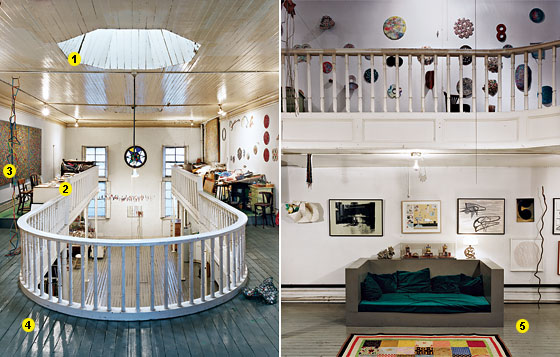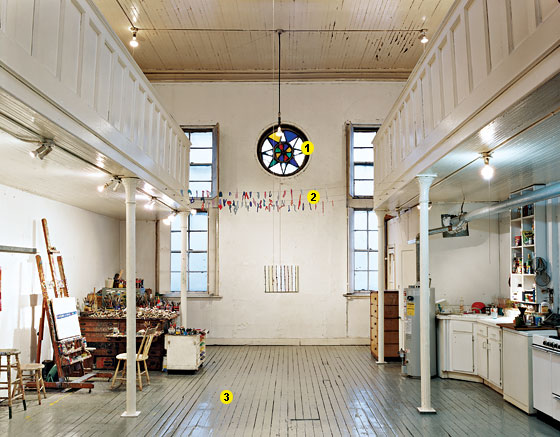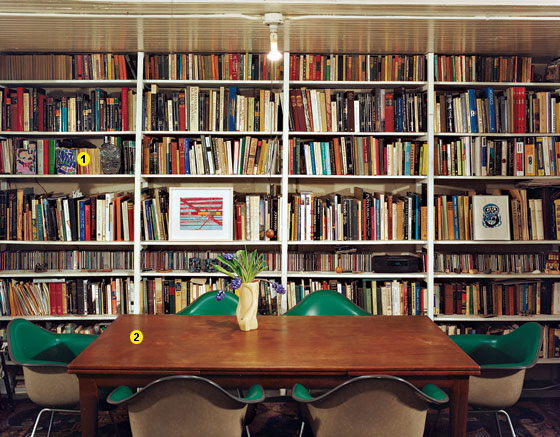
We weren’t looking for a cool place to live,” says Thomas Nozkowski, sitting in front of his easel. “We were looking for a place that cost a hundred dollars a month.” Nozkowski, a painter (his show at PaceWildenstein runs through May 3), and his wife, the sculptor Joyce Robins, stumbled across a cardboard for rent sign on Hester Street just as they were finishing their studies at Cooper Union. That the studio was a dilapidated former synagogue didn’t mean as much as the 25-foot ceilings and excellent light.
The property had other lives before the couple, who married in 1967 after art school, moved in. It had housed an underwear factory, a shower-curtain factory, the neighborhood still, a Chinese laundry, and a fabric store. Nozkowski and Robins hauled out five truckloads of trash and did most of the renovations, on a budget of $3,000. Testament to their work: The synagogue turned studio where they worked on their art (and raised their son, Casimir) is unchanged since those first renovations.

1. The Skylight and Windows
They’d survived the synagogue’s various incarnations, but the skylight and windows were covered with a dropped ceiling when Robins and Nozkowski moved in; they pulled it down to let the light in.
2. The Balcony
When the building was a synagogue, women sat here, to be separate from men during services.
3. The Sculptures
This is Robins’s workspace; her pieces are stored on the wall and floors.
4. Basic Amenities
The couple did all the renovations in 1969 within a $3,000 budget. “We had to do the electricity and bring in water,” says Robins. “I think the gas lines were there, but the water lines were all corroded.”
5. The Couch and Artwork
The large geometric wood-frame couch was built by Nozkowski’s father in 1969, to comfortably hold a mattress. The artworks above are by various friends and acquaintances.

1. The Rear Wall and Stained-Glass Window
Soon after moving in, the couple began renting movies and projecting them on the wall for gatherings. They sometimes find bits of old prayer books floating in the air. “The prayer books exude from the woodwork,” says Robins. Jewish tradition dictates “you are not allowed to dispose of them; they have to be buried,” she says. “So the congregation stuffed them in the walls. I collect them. I’m keeping them safe.”
2. Hanging Sculpture
Hot and Cold Wars hangs between the two balconies. Robbins made the ceramic pieces, and her husband painted and strung them.
3. The Downstairs Interior
The building’s simple, open plan was consistent with the young artists’ work and living philosophies. “When we came to New York in the early sixties, we were taught by Abstract Expressionists,” says Nozkowski. “And I remember discussing with our teachers that, you know, it was morally important to live and work in the same place. You fried eggs the same way you painted paintings.”

1. The Library
The bookshelves were built by the artists and inspired by the Bauhaus furniture in their friend Ruth Vollmer’s apartment.
2. The Dining Room
The dining table was purchased from an antique store on Essex Street in the eighties. The chairs are by Eames.
